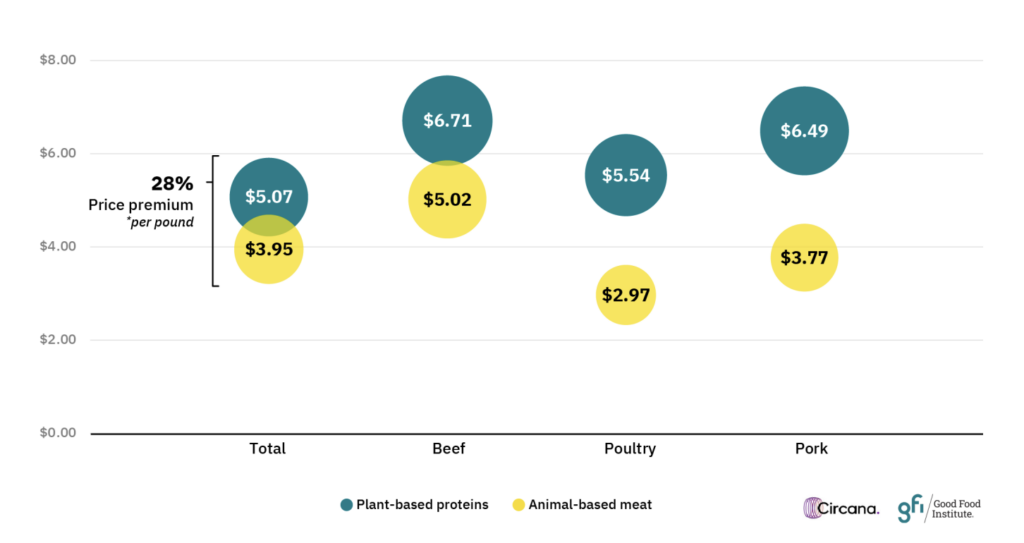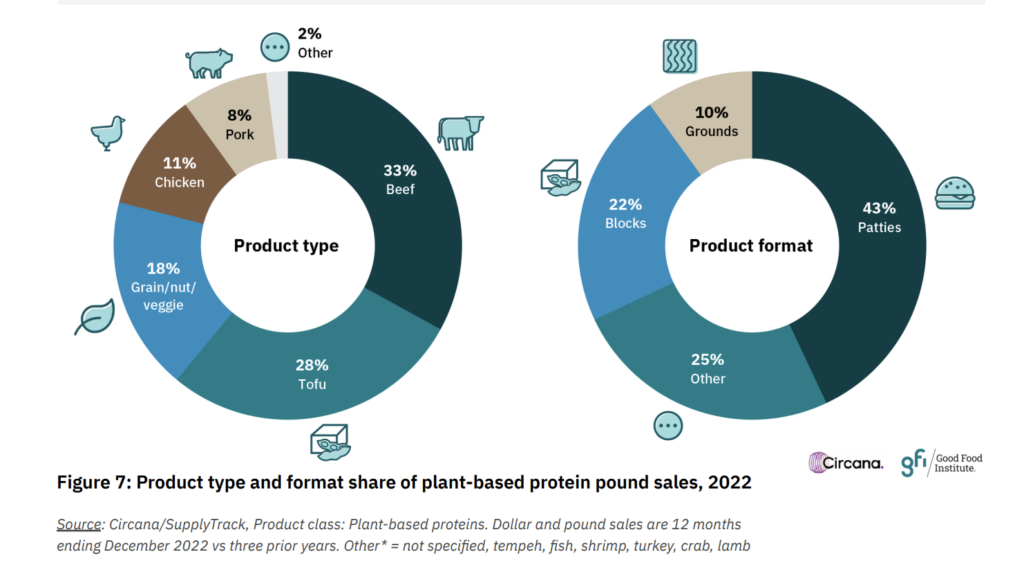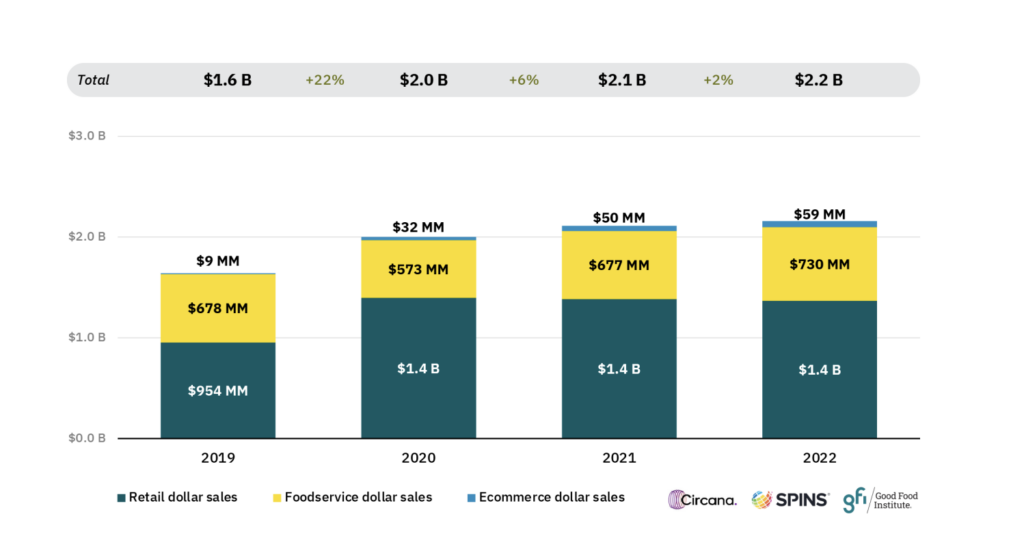4 Mins Read
The plant-based meat train in the US may not be on the backfoot the way some have predicted, with dollar sales reaching $2.2B across retail, foodservice and e-commerce, according to a report by industry think tank the Good Food Institute (GFI). The foodservice sector saw an all-time high of $730M in sales, while the retail industry flatlined at $1.4B.
While the total sales revenue increased by 2% year-over-year, pound sales for plant-based meat in the US declined – this is due to inflation-induced price increases. Vegan protein products in the US saw a price hike of 9% per pound from 2019-22, with a 4% year-on-year rise in wholesale prices in broadline distribution (across multiple product categories). The report also found that plant-based meat consumers make over 30 more foodservice visits per year than the average buyer, spending around $400 more annually.
However, these rates are still lower than conventional meat, which saw a 26% cost increase from 2019-22, and 8% year-on-year for wholesale prices in broadline distribution.

Meat analogues vs traditional plant-based protein
In fact, prices per pound for plant-based beef have come down by 11% from 2019, as more companies achieve scale and favourable distribution agreements. It remains the most popular alt-protein, accounting for 33% of the market. It’s followed by tofu (28%), grains/nuts/vegetable-based products (18%), chicken (11%) and pork (8%). Amid formats, patties dominate sales with a 43% share.
Notably, there has been a shift in consumer preference in the type of plant-based protein. In 2019, traditional plant proteins like tofu, tempeh, and grains, nuts and vegetables captured 60% of pound sales, while analogues like vegan chicken, beef, seafood, etc. made up 39%. Now, that share has flipped, with meat analogues commanding 53% of the market, compared to 46% for non-analogues. (The remaining 1% share is unspecified.)
It points to the increased popularity of plant-based meat in the US, with consumers preferring vegan products aiming to match the taste and texture of conventional meat. The shift in market share is being occupied by vegan chicken (a 123% rise from 2019-22), pork (+57%) and seafood (+149%).
“The growing availability of plant-based products across product and protein types means that operators can increasingly offer plant-based versions of existing menu items across cuisines and formats and appeal to a wider range of customers,” says GFI.

In terms of foodservice locations, quick-service restaurants (QSRs) rule the roost, with 39% of plant-based protein pound sales happening here in 2022. Meanwhile, 19% of sales took place in full-service restaurants (FSRs). These numbers suggest the hospitality industry is still catching up to pre-pandemic levels, with the pound sales for alt-protein down by 1% for QSRs and 5% for FSRs compared to 2019.
And while educational institutions saw a steep fall in alt-protein sales in 2020 due to lockdowns, this figure has rebounded and surpassed 2019 levels by 25%. It’s supported by initiatives like US foodservice provider Aramark promising that 44% of its residential dining menus at 250+ colleges and universities will be plant-based by 2025, and Sodexo’s commitment to making 50% of its college campus menus plant-based by 2025.
Purchase frequency and increased menu options
Looking at demographics, younger (18-24), male, and Black, Hispanic and Asian consumers are more likely to purchase plant-based meat in foodservice operations, which is similar to retail trends. And when it comes to frequency, nearly 10% of Americans purchased vegan alternatives to meat in foodservice in 2022 – the majority (63%) being single-time purchasers.
Only 15% of buyers repeated their purchase twice, and 7% thrice. However, 15% repeated it more than four times, reflecting an eagerness on consumers’ part for more alt-protein options. A 2022 Mintel report found that five in 10 omnivores and eight in 10 flexitarians say that more restaurants should serve plant-based meat alternatives.

GFI’s report underscores the findings another US foodservice-focused report earlier this month by the Plant Based Foods Association, which found that 95% of foodservice operators expect increased or stable sales of vegan food and beverages in the next year, with 76% aiming to continue or increase the number of plant-based meat options. It added that nearly half (48.4%) of all US restaurants currently offer plant-based options on their menus, with a 62% increase in plant-based menu items over the past decade.
GFI says making further progress on taste and price will be key to reaching more meat-eaters and expanding the market, and reiterates that the US plant-based sector is returning to pre-pandemic levels: “The long-term performance of plant-based proteins in foodservice indicates that the plant-based category is continuing to mature.”



